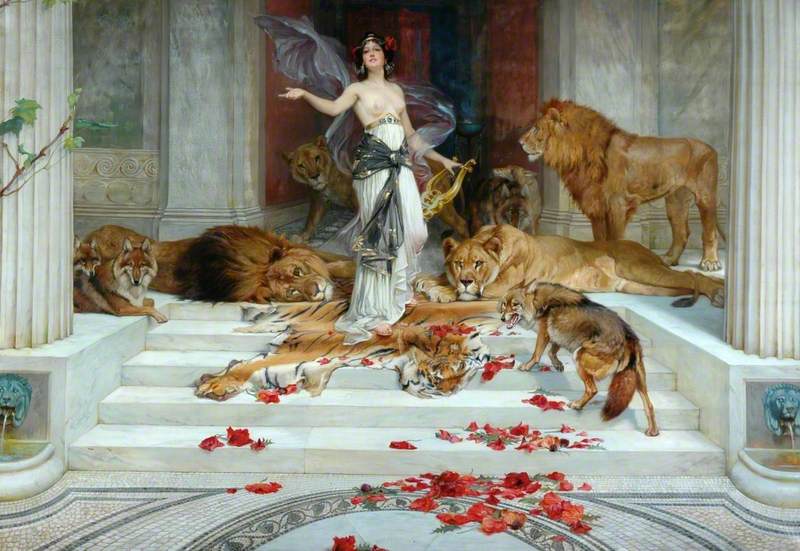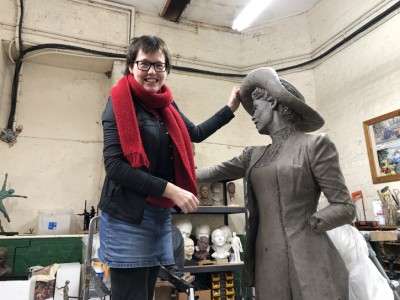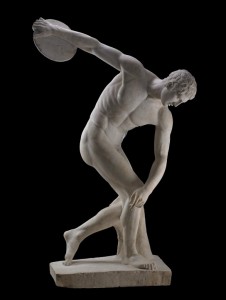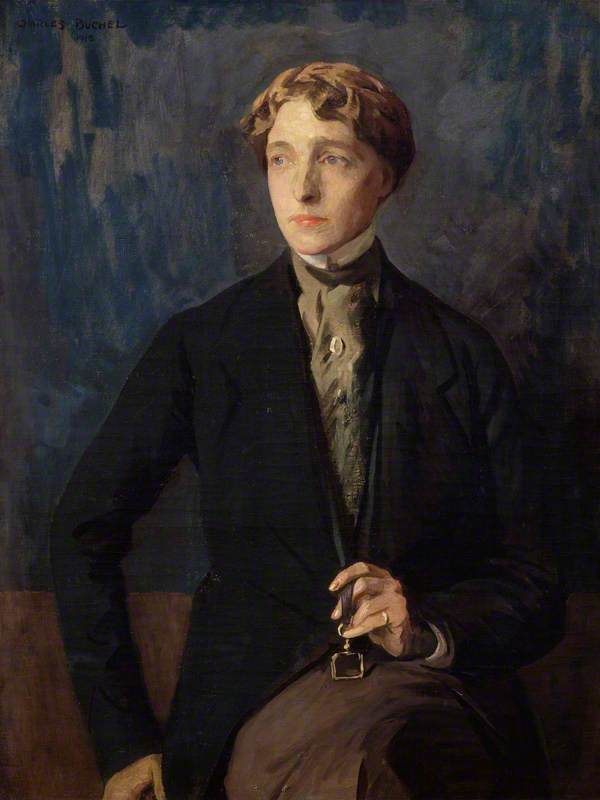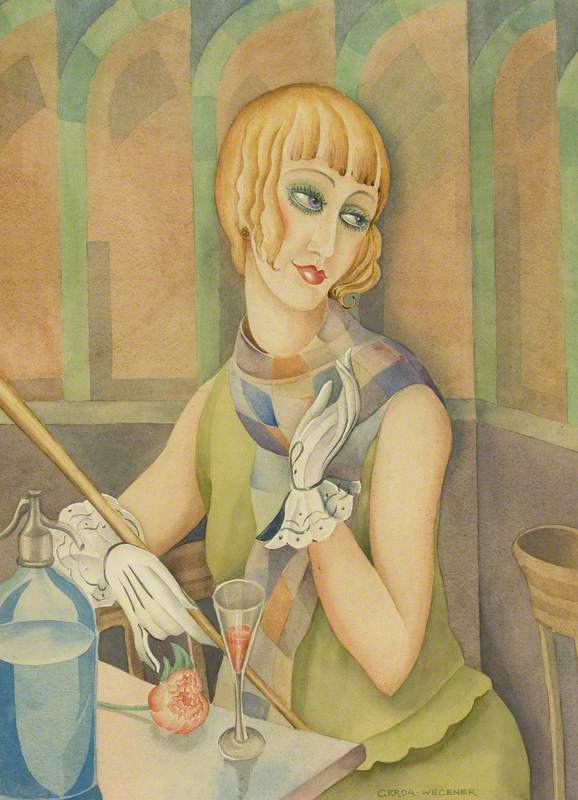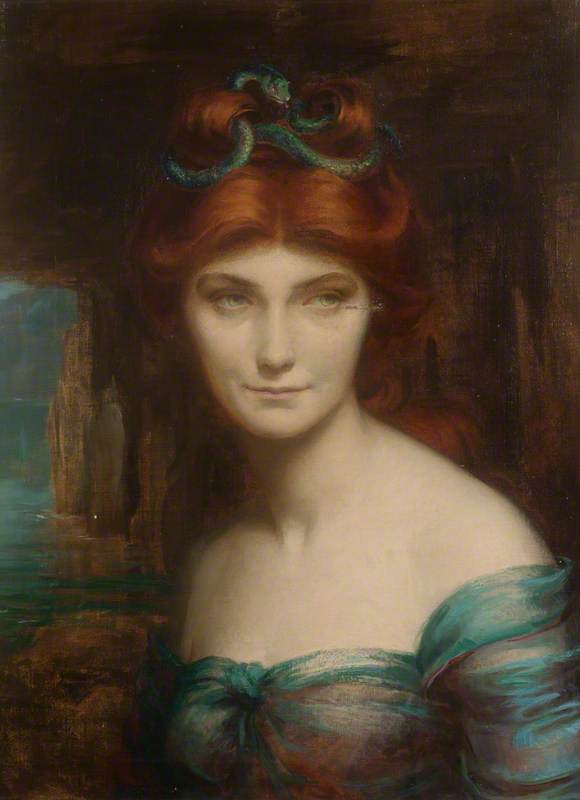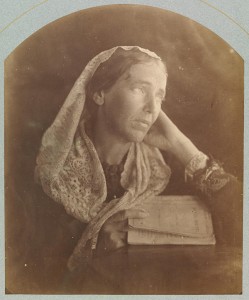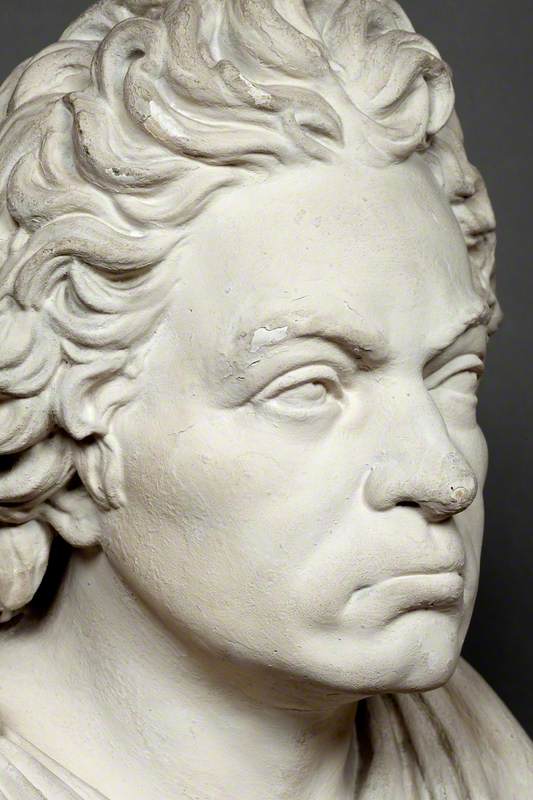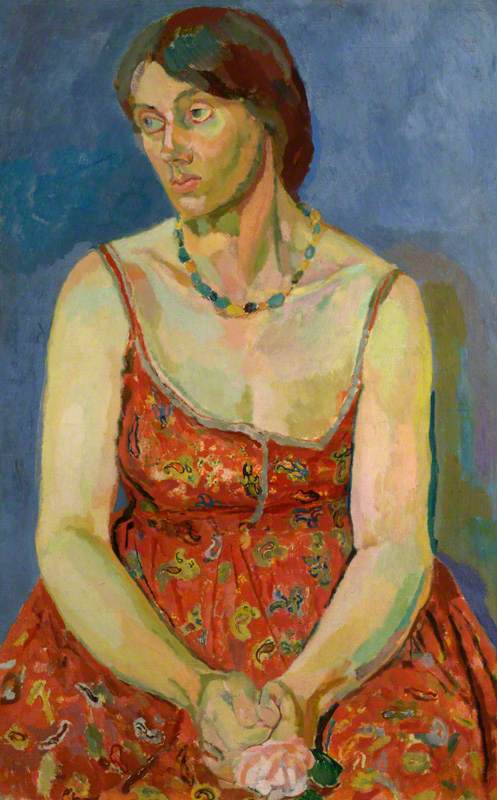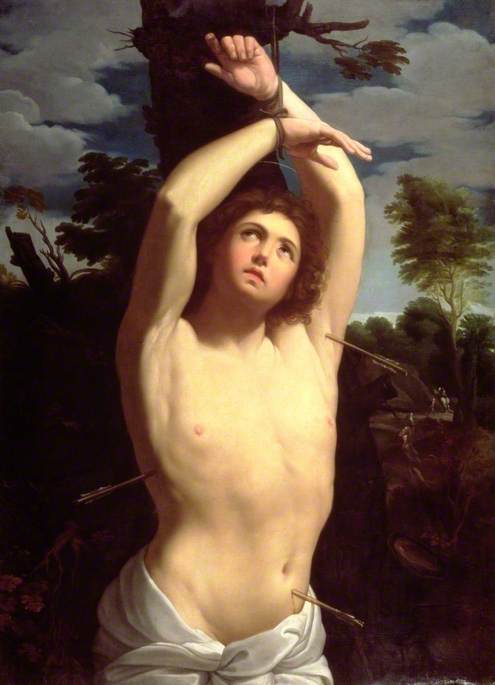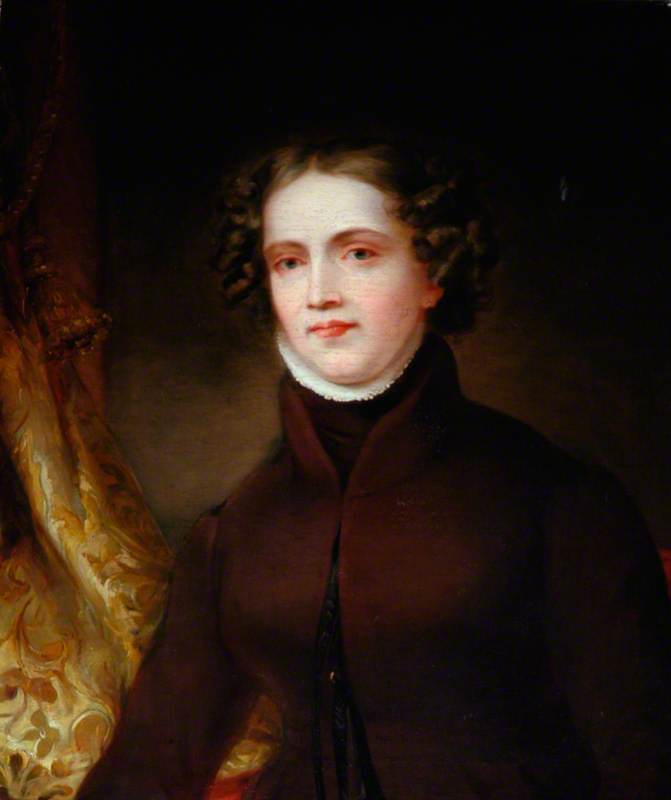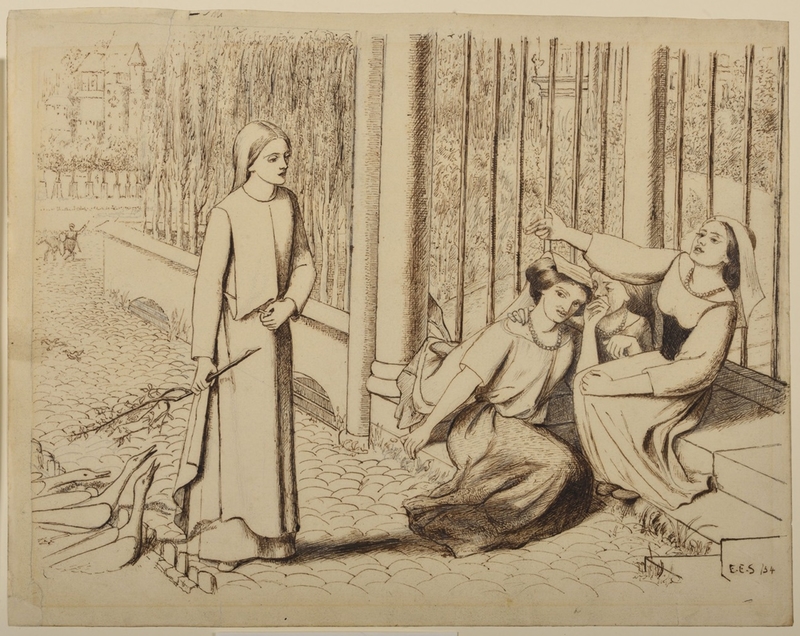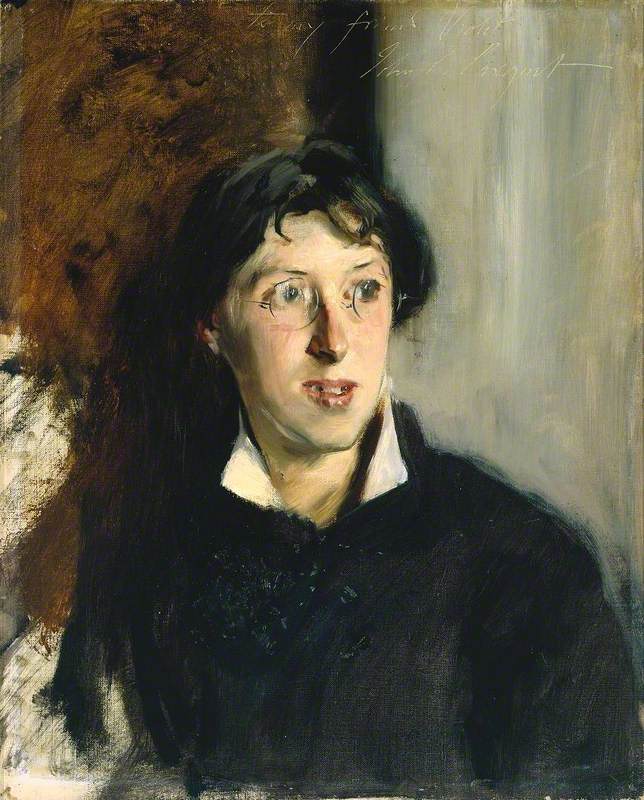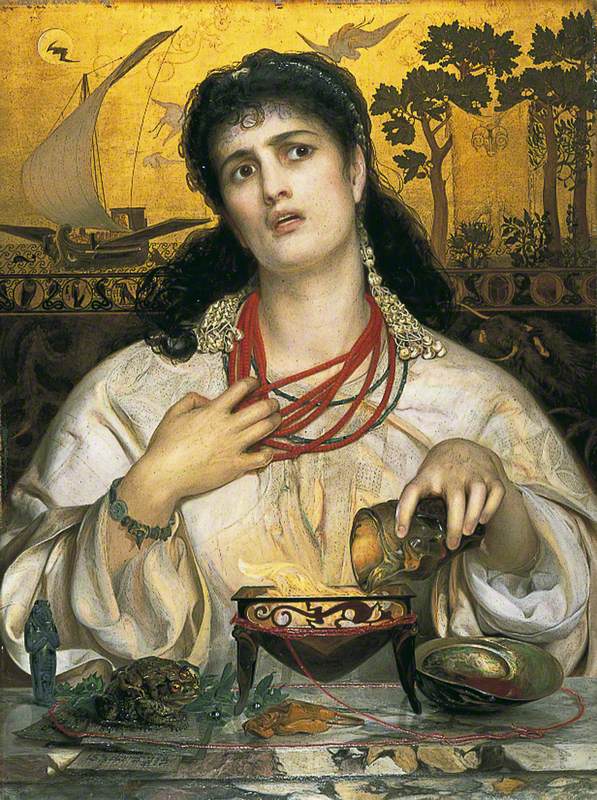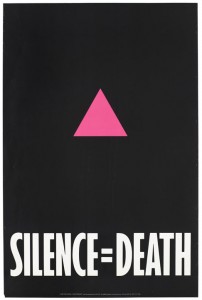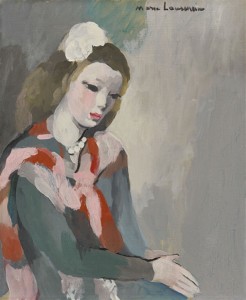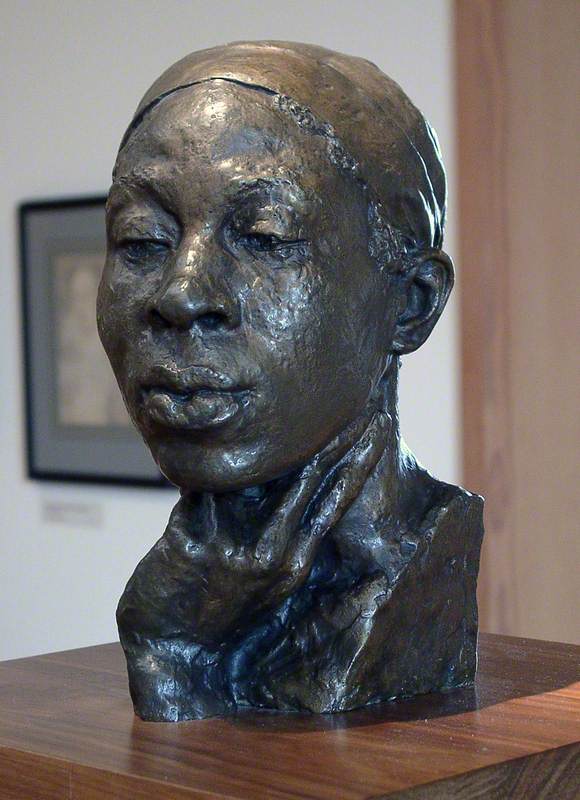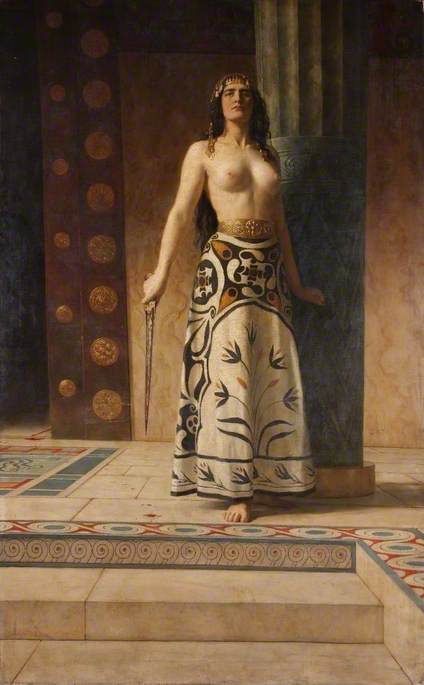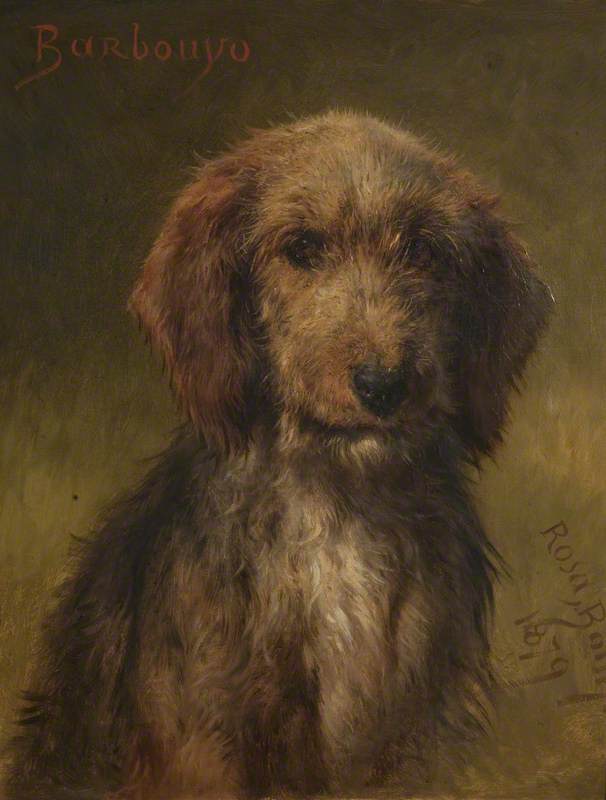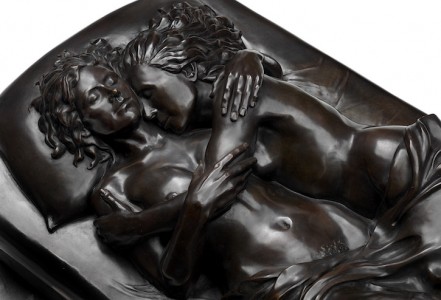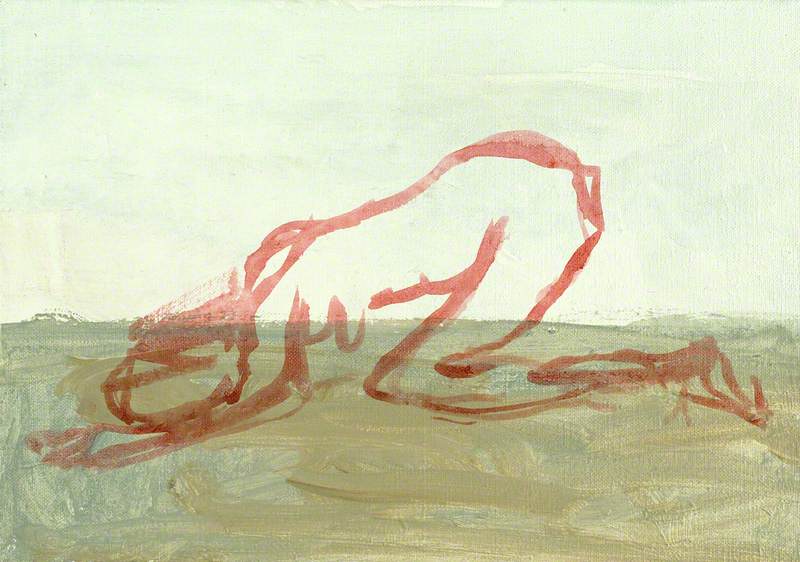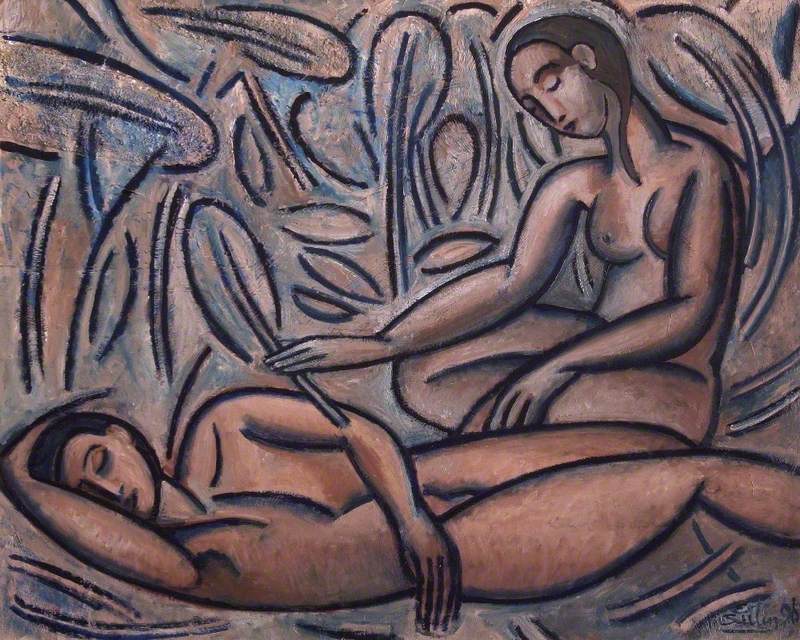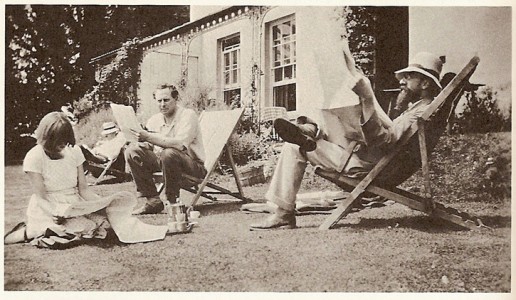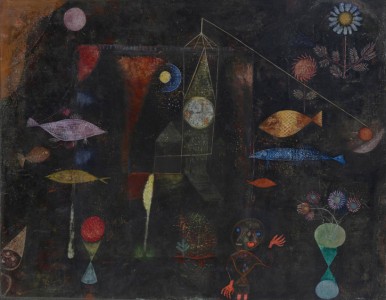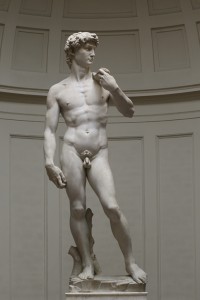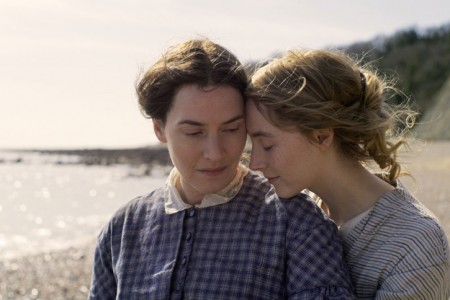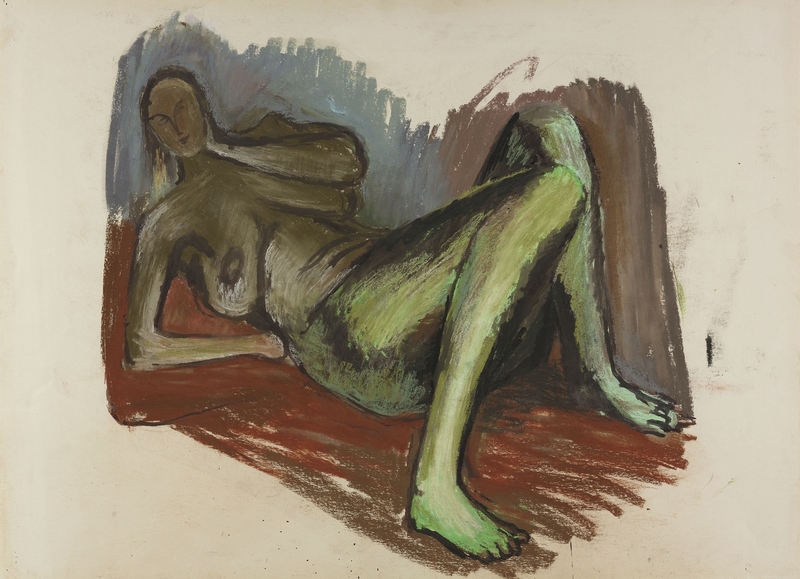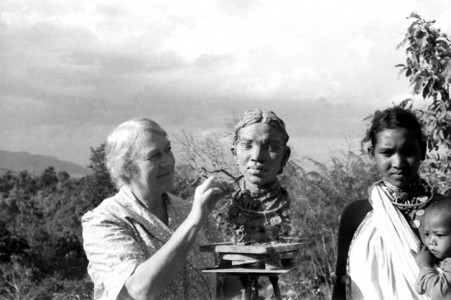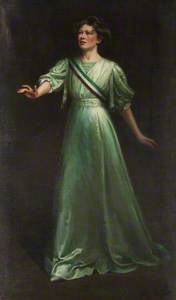The history of lesbianism is one fraught with conflicting narrative interpretations. Historical traditions, language and the dangerous stigma of expressing homoerotic desire have meant that there are few examples of what a modern audience would recognise as explicit examples of female homosexual love.
The contemporary viewer is thus often forced to piece together incomplete and coded 'evidence' to form a picture of an individual's romantic life, while simultaneously remaining careful not to impose anachronistic understandings and labels onto the past.
For example, female artists who remained unmarried, especially in the nineteenth and early twentieth centuries, are still often described and categorised as 'spinsters' who (coincidentally) cohabitated with their close female friend for many decades.
The position that Sappho occupies in lesbian history demonstrates this issue well. Sappho was an Archaic Greek poet who was considered to be so masterful in the ancient world that she was dubbed the 'Tenth Muse'. Most of her work is unfortunately now lost, and what is extant is fragmentary, with only one complete poem surviving.
Sappho has since become a symbol of desire between women as much of her surviving poetic verse appears to eulogise romantic female relationships. It is often incredibly intimate in its content, as exemplified in this snippet from Sappho 31:
'That man to me seems equal to the gods, the man who sits opposite you and close by listens to your sweet voice and your enticing laughter – that indeed has stirred up the heart in my breast.' (Sappho 31.1–6)
Sappho and Alcaeus
1881, oil on canvas by Lawrence Alma-Tadema (1836–1912) 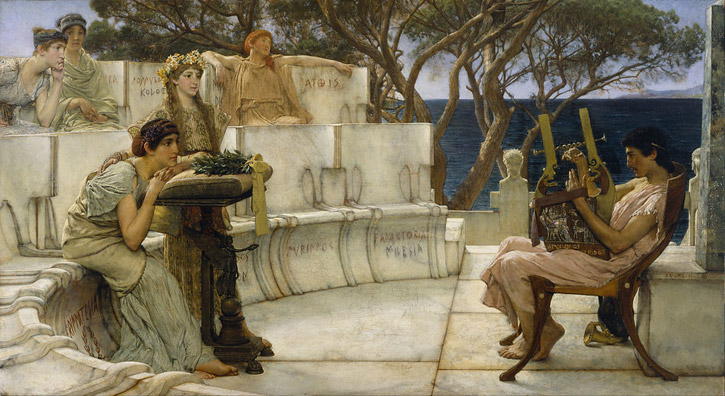
The modern identification of Sappho with female homosexuality is, in fact, so strong that the words 'sapphic' and 'lesbian' are derived from her own name and the name of her home island of Lesbos respectively. For example, in 1908, the famous lesbian poet, Radclyffe Hall, published her poem Ode to Sappho. However, in ancient scholarship, Sappho was more frequently portrayed as a promiscuous heterosexual woman, with her contemporary male poet Alcaeus of Mytilene portrayed as a possible lover.
There is, unfortunately, no way for contemporary audiences to confirm Sappho's sexuality or the details of her love life. Regardless of this, LGBTQ+ readers still feel a strong identification with her work, fuelled by a desire to find a common experience in a long history of oppression and erasure. The search for queer female representation is ongoing in the history of art as well.
What follows are examples of sculptors who may have been homosexual and sculptures of renowned, possibly queer, women – some arguably more explicit in their identity than others.
Anne Seymour Damer
Anne Seymour Damer (1748–1828) was an English sculptor, traveller and actress who regularly exhibited at the Royal Academy at the turn of the nineteenth century. Damer moved in aristocratic circles and was a close friend of the prominent writer and Whig politician Horace Walpole.
She married John Damer in 1767 but the couple had no children and separated after seven years. During her marriage, Damer's love for male clothing and her affectionate relationships with other women were considered rather controversial and she was often satirised by commentators.
Elizabeth, née Farren (1759–1829), Countess of Derby
c.1788
Anne Seymour Damer (1748–1828) 
In her busts of the actress Elizabeth Farren and the writer Mary Berry, Damer boldly sculpts two supposed objects of her desire. She reportedly had an affair with Elizabeth Farren and she lived with Mary Berry in her later years.
Mary Berry (1763–1852)
(based on a work from c.1793)
Anne Seymour Damer (1748–1828) 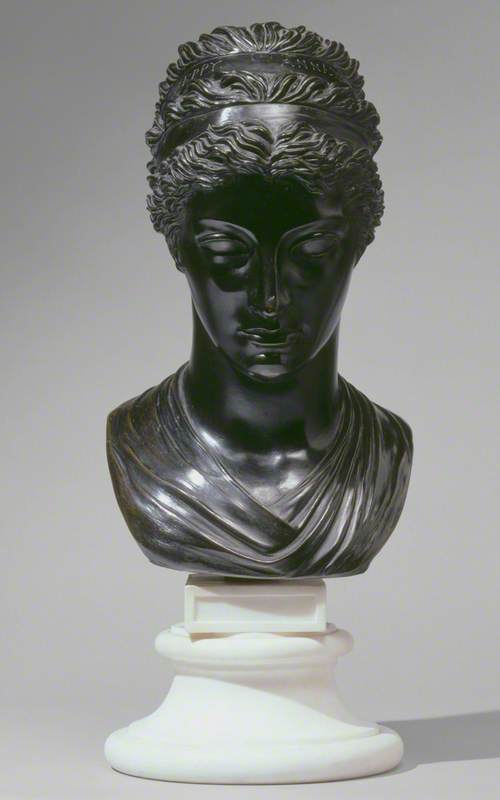
Harriet Hosmer
The rich mythology of the ancient world also provided inspiration and identification for lesbian creatives. The American neoclassical sculptor Harriet Hosmer (1830–1908) created a delicate bust of Medusa in 1852, in which she is midway through her transformation from a beautiful young woman into terrifying Gorgon with the power to turn men to stone.
Hosmer had a scandalous relationship with Louisa Baring after the death of the latter's husband Baron Ashburton. In personal letters, Hosmer dubbed herself 'hubby' and called Baring 'my sposa' – Italian for 'wife'. Hosmer famously said that she 'honour[s] every woman who has strength enough to step outside the beaten path when she feels that her walk lies in another; strength enough to stand up and be laughed at, if necessary.' This attitude is perhaps what inspired her to sculpt the figure of the vilified Medusa, who, despite being made monstrous by Athena as a punishment for being raped in the goddess' sanctuary, began to be considered a powerful symbol of female rage in the twentieth century.
Harriet Hosmer
1873, engraving by Augustus Robin, featured in the 1868 publication 'Eminent Women of the Age' by James Parton (1822–1891) 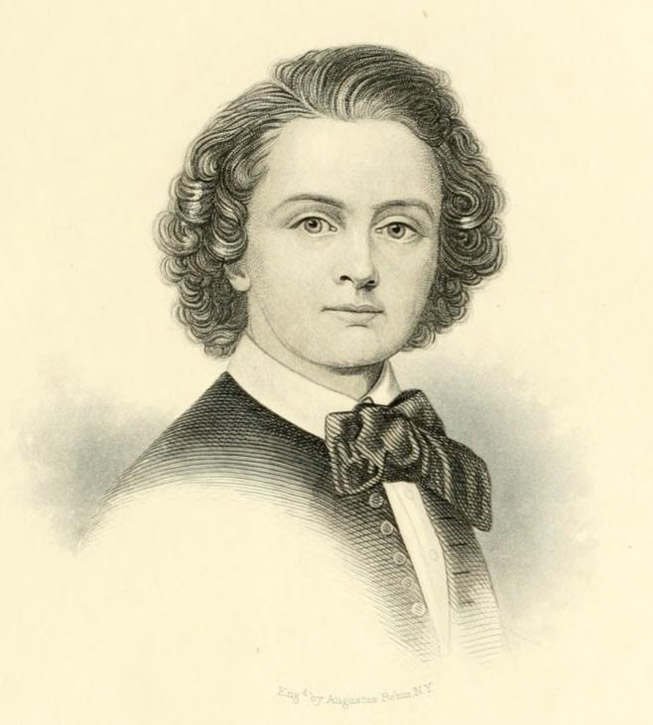
This engraving of Hosmer from 1873 shows her independent spirit and penchant for cross-dressing – she was known for wearing male clothing.
Julian Phelps Allan
Born Eve Dorothy Allan, Julian Phelps Allan (1892–1996) was an English sculptor active in the mid-twentieth century who served in both the First and Second World Wars. In 1929, Allan assumed the masculine alias of 'Julian Phelps Allan', which has been understood by some as a way of declaring her lesbian identity. Others have suggested the pseudonym reflected the artist's gender crisis, or, more simply, a means of giving her sculptural work more credibility by attaching a less feminine name to it.
Allan's sculpture Winged Victory does not relate to her sexuality but to her wartime experience. Winged Victory sits above the chapel of the Blind Veterans UK centre (formerly St Dunstan's) in Brighton. In 1974, the artist herself registered as blind, meaning her earlier sculpture from 1938 must have gained a new poignance.
Dame Ethel Mary Smyth
English composer and early women's rights activist, Dame Ethel Mary Smyth, is commemorated in this bust by sculptor Gilbert Bayes (1872–1953). Born in 1858, Smyth entered the male-dominated world of musical composition at the age of 17, and, despite rampant sexism, succeeded in becoming the first female composer to be awarded a damehood.
Dame Ethel Mary Smyth (1858–1944)
1938
Gilbert William Bayes (1872–1953) 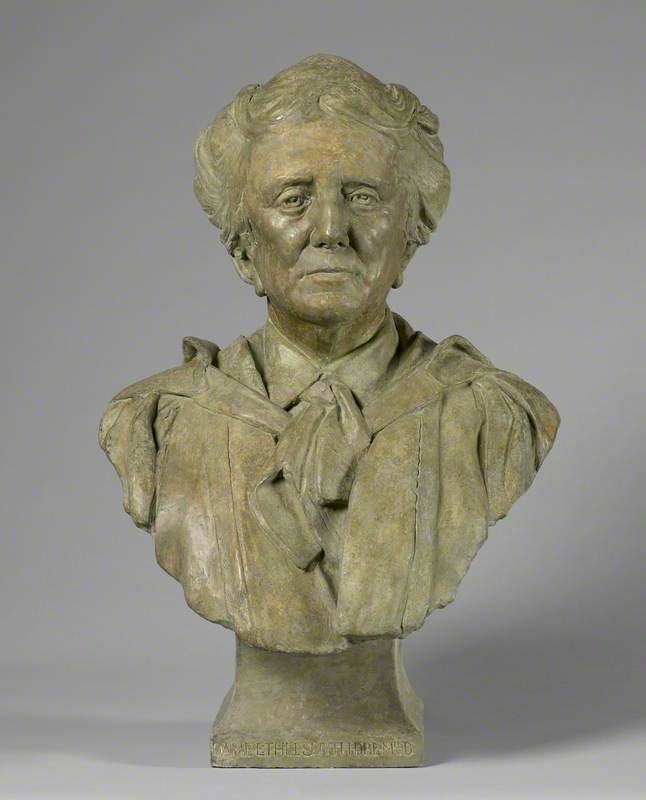
Smyth was also actively involved in the suffrage movement in the early twentieth century, and her composition The March of Women was adopted as the movement's anthem.
Smyth had several relationships with women throughout her life including Victoria Gordon-Woodhouse, the first woman to record the harpsichord. She also made no secret of her passionate love for both the married Emmeline Pankhurst and writer Virginia Woolf.
'Rise up, women' (Emmeline Pankhurst, 1858–1928)
2018
Hazel Reeves and Bronze Age Sculpture Casting Foundry 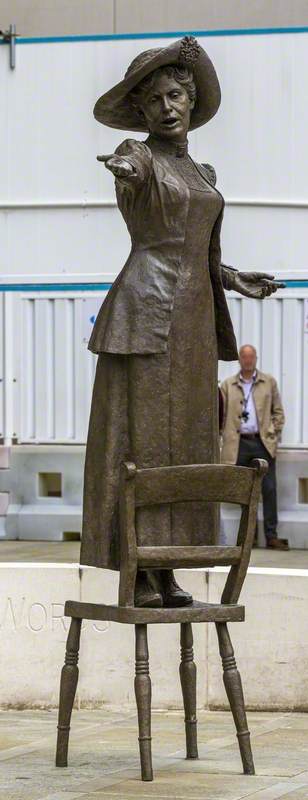
Rumours of lesbian affairs within the suffragette movement were rife. Close female friendships without male supervision were considered an ample breeding ground for sapphic relationships. Emmeline Pankhurst's daughters, Christabel and Adela, were both rumoured to be romantically linked to leading suffragette Annie Kenney, who was known for her many female bedfellows.
The fact that Christabel never married is seen as compounding this theory, though Kenney eventually married and settled down after women over 30 won the right to vote in 1918. However, as with Sappho and Julian Phelps Allan, with so little concrete information or evidence, there is no real way to substantiate these theories. Christabel can be seen second from left and Annie Kenney third from left in this photograph from the National Portrait Gallery.
Suffragette Committee Meeting
1906
Daily Mirror (active since 1903) 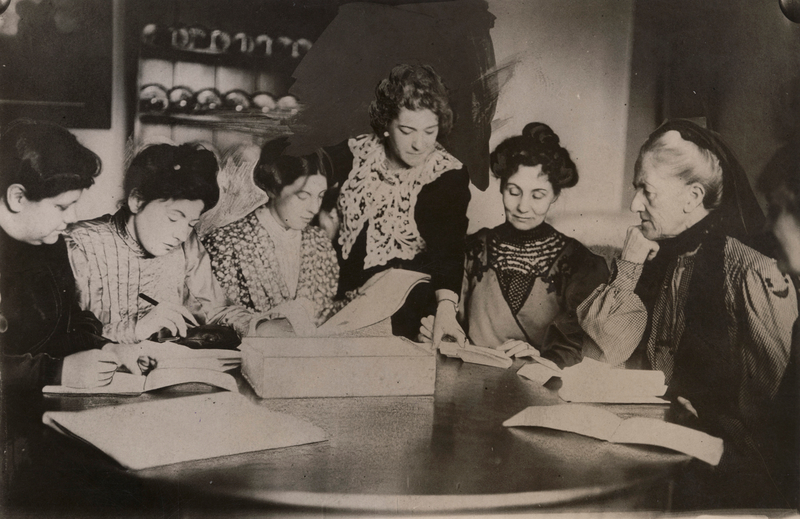
Amelia Ann Blanford Edwards
The nineteenth-century Egyptologist and travel writer Amelia Ann Blanford Edwards can perhaps more certainly be identified as a queer individual. Edwards was buried alongside her longtime travel companion Ellen Drew Braysher and Braysher's daughter Sarah. This suggests that the trio operated as a family unit, and in 2016, their grave was designated as Grade II listed by Historic England and recognised as a landmark in English LGBTQ+ history.
Amelia Ann Blanford Edwards (1831–1892)
1873
Percival Ball (1844–1900) 
Edwards was a popular fiction writer before turning her attention to archaeological research, founding the Egypt Exploration Fund in 1882. This organisation facilitated the work of Sir William Flinders Petrie who went on to become a pioneer of archaeological methodology. Edwards bequeathed her personal collection of ancient artefacts to University College London which founded a research museum in her name, later renamed the Petrie Museum of Egyptian Archaeology after Flinders Petrie. This is unfortunately all too common an occurrence – a woman's contribution lost to history in favour of her male counterpart.
Amelia Edwards
1860s, albumen carte-de-visite by Frederick Richard Window (1824–1875) 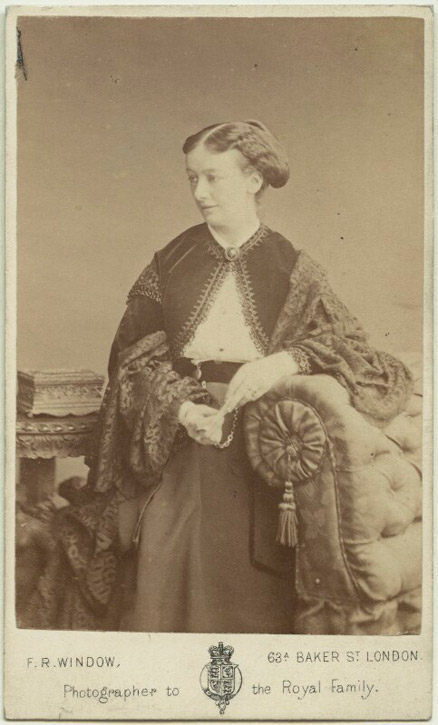
Discussions about lesbian identity in art history before the twentieth century remains a problematic endeavour for art historians, though with the influence and impact of queer theory and promotion of LGBTQ+ histories, we can continue to fill in the gaps of knowledge, providing new perspectives about an artist's life and work along the way.
Flora Doble, Operations Officer at Art UK
Further reading
Daniel Mendelsohn, 'Girl, Interrupted. Who was Sappho?', The New Yorker, March 9th, 2015
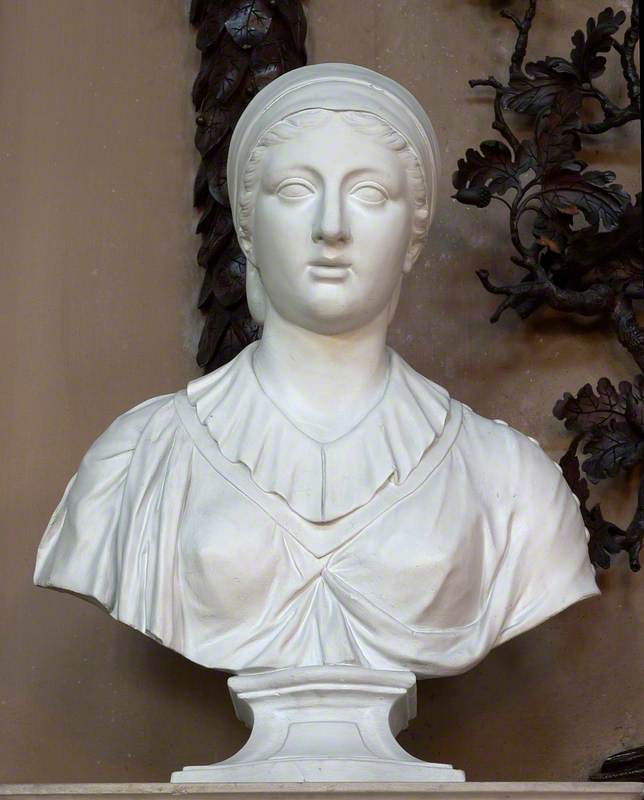
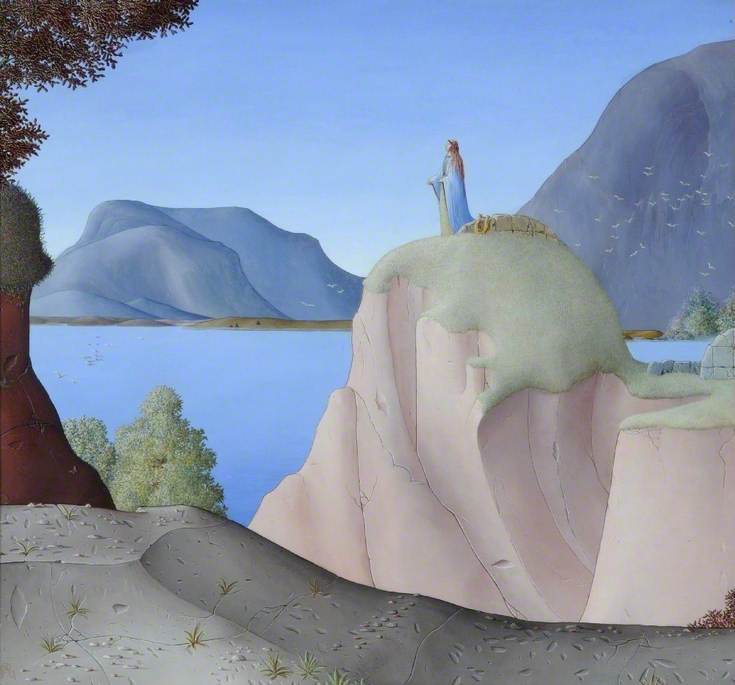
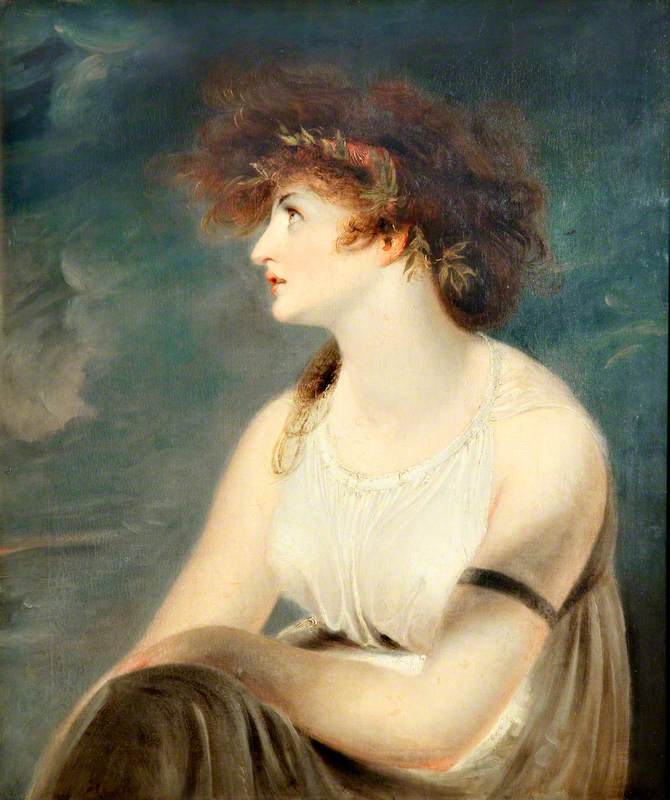
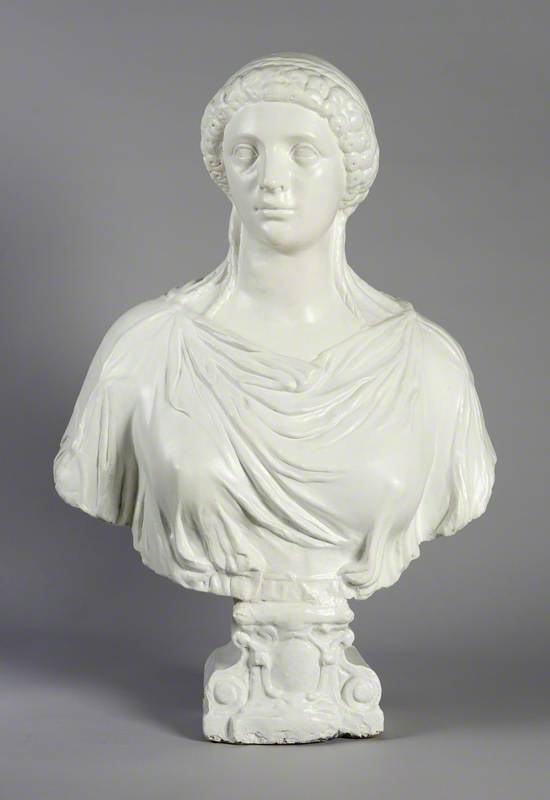
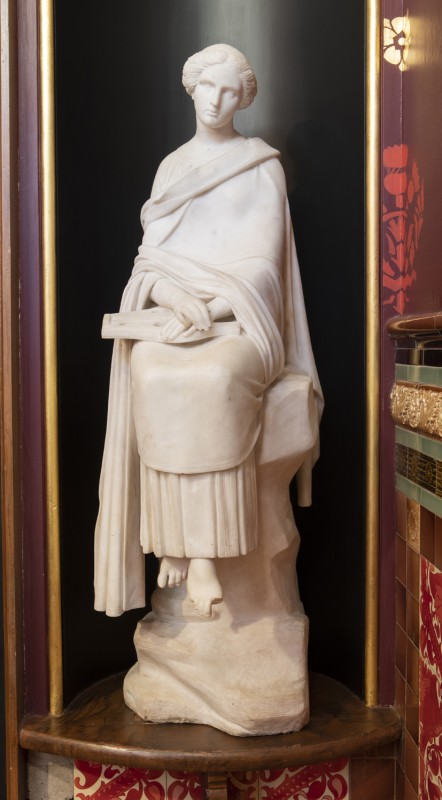
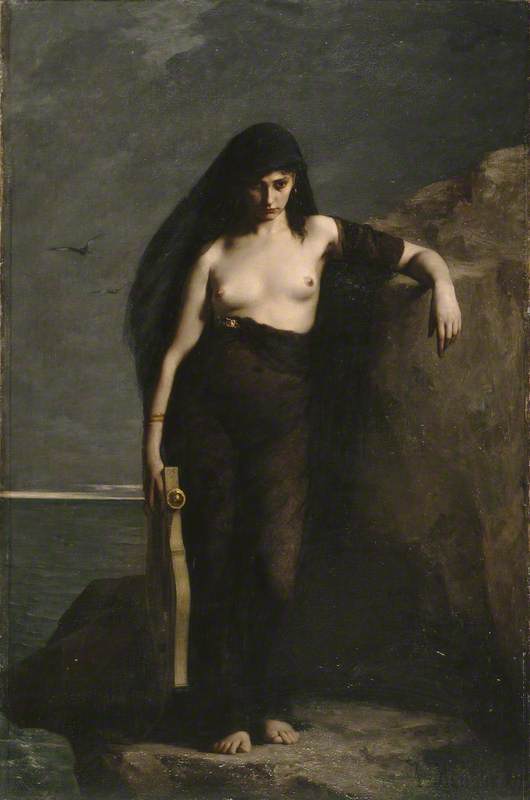
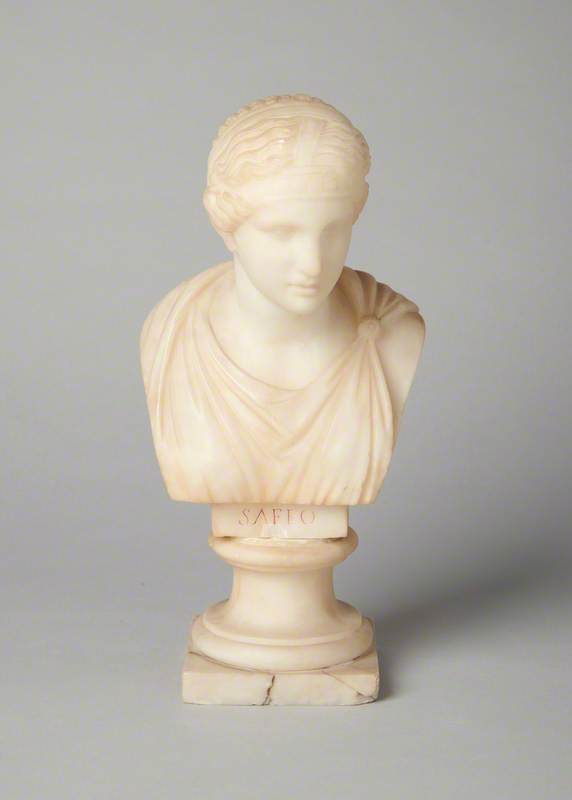
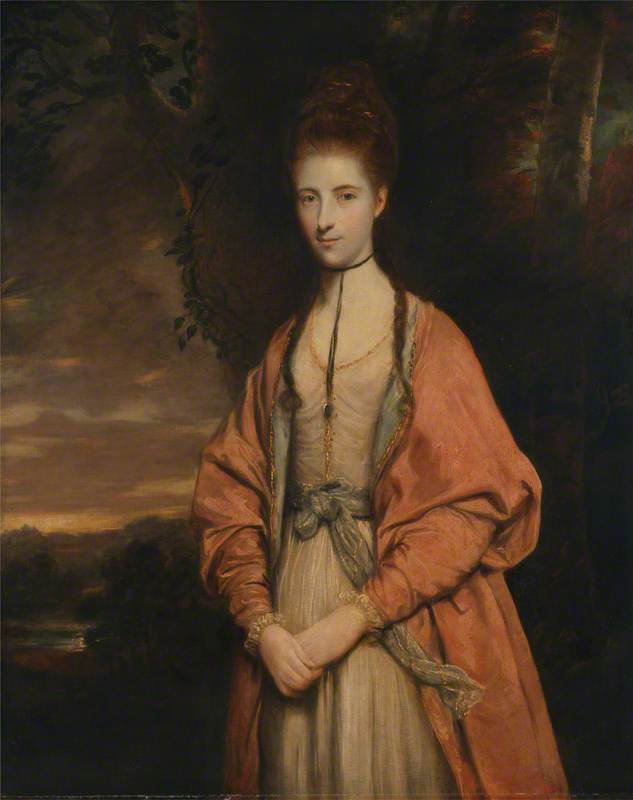
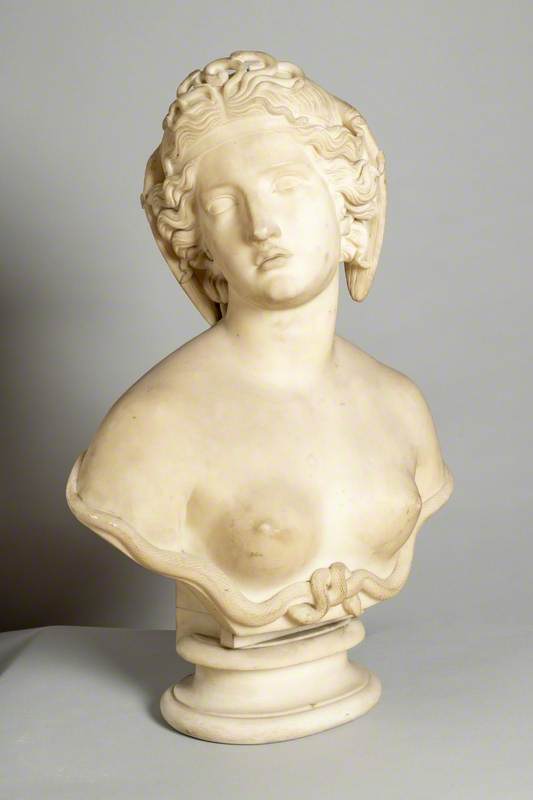
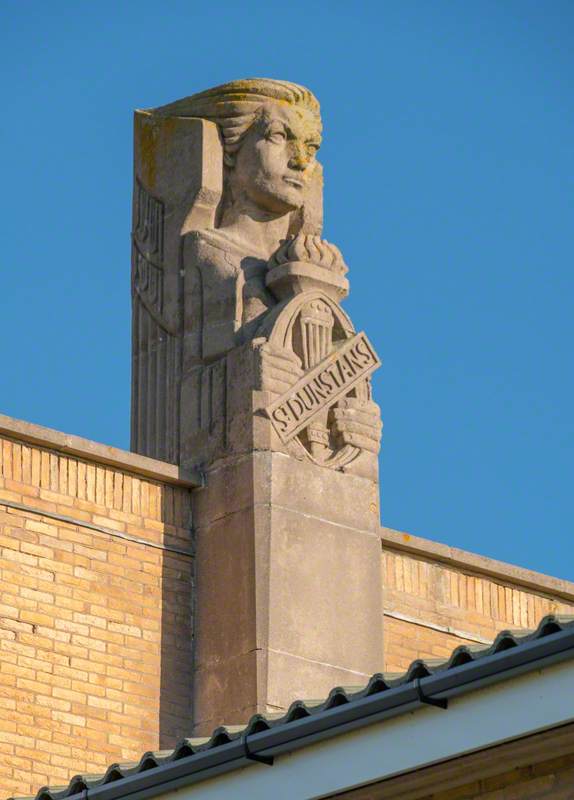

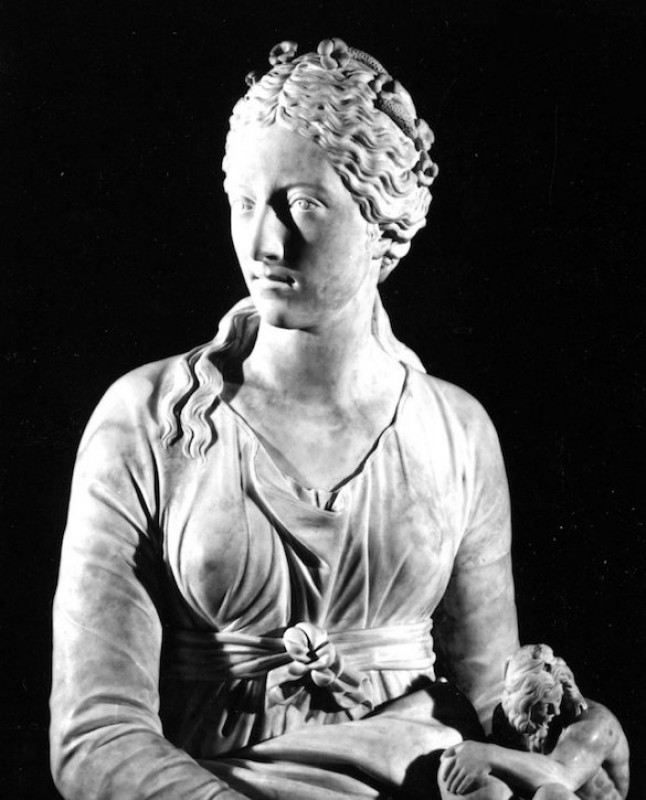
.jpg)
